From C1 To C7: Discover How The Chevy Corvette Has Evolved
From C1 To C7: Discover How The Chevy Corvette Has Evolved
DRIVE_WORLDSeven generations of American high-performance machines have created one of the longest-surviving sports cars.
With the highly anticipated debut of the Chevy Corvette C8 right around the corner, we figured it would be the right time to look back at all seven generations of what many people consider to be the quintessential American sports car. It only seems fair to take a trip down memory lane after doing the same about a month ago for another model situated at the core of the performance genre, the Ford Mustang.
Spanning across more than 60 years of existence, the Corvette has had an interesting journey throughout its seven generations. While it hasn’t exactly been a smooth ride, the fact that it’s still with us proves the model has withstood the test of time and is one of the longest-surviving nameplates in the automotive industry.
Our friends at BudgetDirect have come up with a nifty photo collage of all seven generations, from the C1 that started it all back in the early 1950s to the current C7 launched in 2013.
So, sit back and brush up on your ‘Vette knowledge. It’s a good opportunity to kill some time until the long-awaited debut of Chevy’s first production-ready mid-engined Corvette.
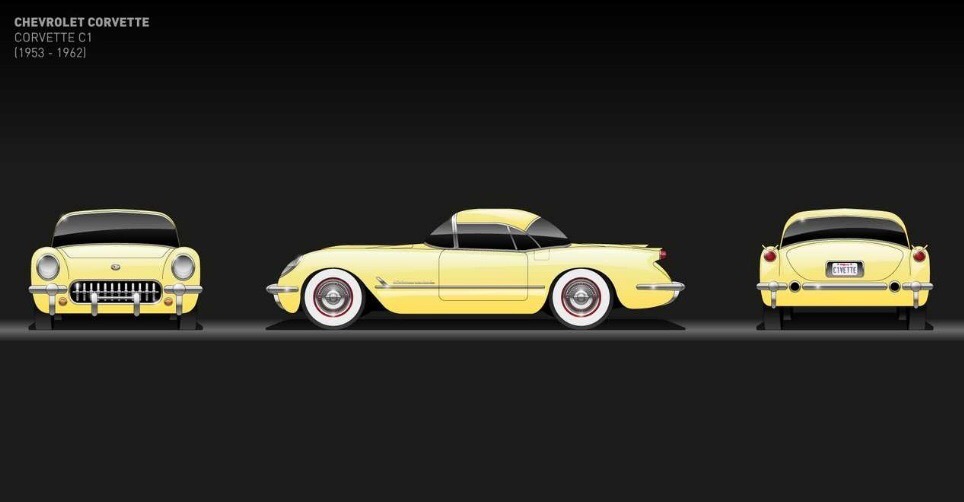
At the beginning of 1954, GM’s St. Louis plant in Missouri started assembly of the Corvette and upgraded the inline-six engine from the original 150 horsepower to 155 hp. A year later, a larger V8 was added to the range, along with the option of a three-speed manual gearbox. The model went on to evolve in 1956 with the addition of a removable hardtop and exposed headlights, while seatbelts were introduced as an option installed by the dealer.
1957 saw the introduction of a four-speed manual and a bigger V8 benefitting from fuel injection and producing as much as 283 hp. As the years went by, the C1 went through some cosmetic tweaks along with gaining a further enlarged 5.4-liter engine for the final model year, 1962.
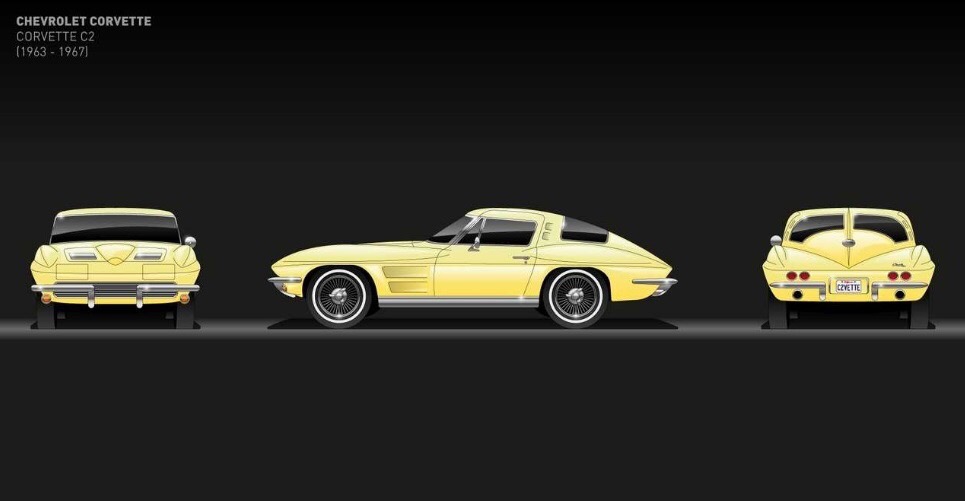
Fast forward to 1965, a big block V8 engine was introduced, along with standard disc brakes for all four wheels. A year later, output grew to 425 horsepower and the list of standard goodies expanded to include Holley carburetors that had been offered only on select models prior to 1966.
For its final year on the market, the C2 got 430 hp generated by the L88 engine whereas the L71 unit received aluminum cylinder heads.
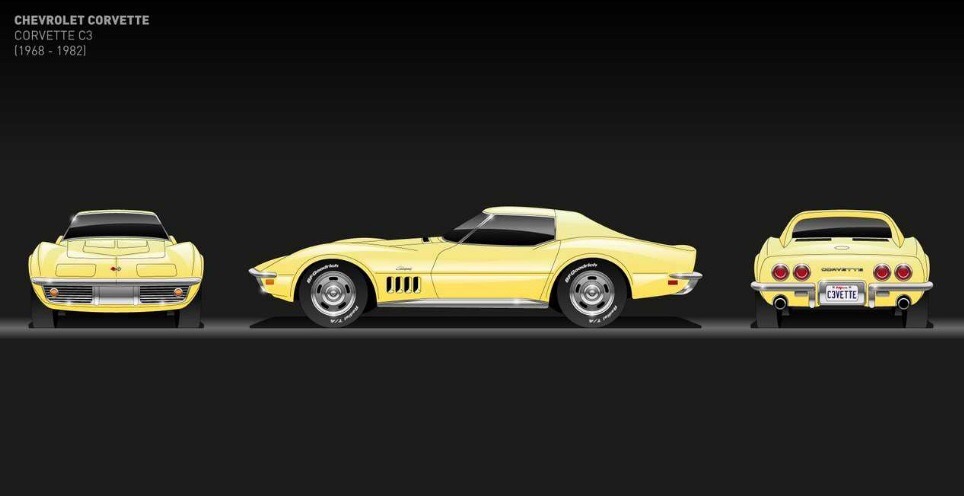
In 1970, Chevy added the 390-hp LT1 as well as the ZR1 package boasting fender flares. A year later, the LS6 V8 was introduced. In 1973, the Corvette received standard radial tires and a crash-compliant plastic nose finished in the same color as the rest of the body. For the 1974MY, Chevy ditched chrome for body-colored plastics at the back, and retired the convertible at the end of the 1975MY.
In the following years, the C3 got a fastback body, spawned an Indy 500 Pace Car Replica edition, and received halogen headlights. Production at the St. Louis plant ended in 1981 and started at Bowling Green, Kentucky, while the Collector’s Edition launched in 1982 served as the C3’s swan song.
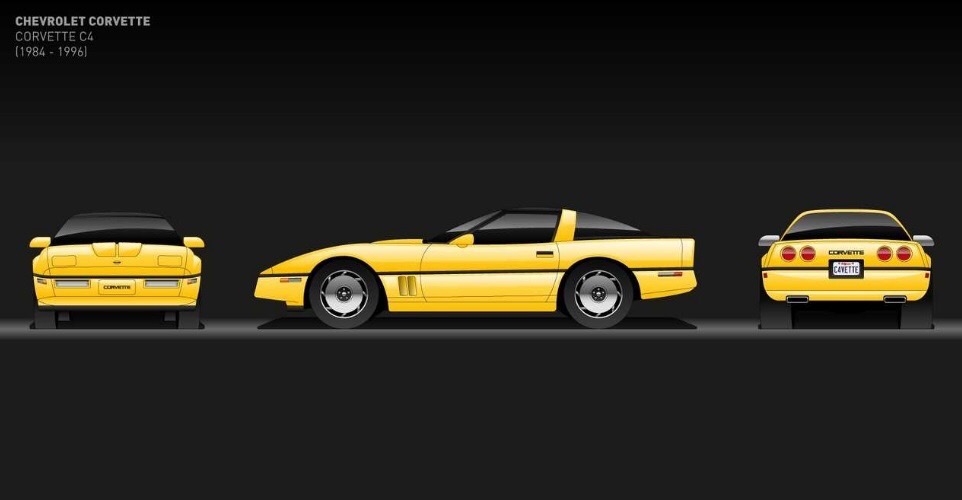
The 1987MY came along with a power bump to 240 hp and better handling thanks to an optional Z-52 suspension package. Those with a bigger thirst for power had the option of spending extra at some dealers to get a Callaway twin-turbo kit lifting output to 345 hp. Chevy rolled out a 35th Anniversary Edition for 1988 when it installed as standard equipment dual-piston brakes for the front axle. A six-speed manual gearbox was introduced in 1989.
1990 was an important year as it marked the launch of the ZR1, complete with 375 horsepower coming from a 5.7-liter V8 engine. Also that year, an airbag for the driver became standard. Until its retirement in 1996, the C4 was refreshed for the 1991MY, got a 300-hp small-block V8 for 1992MY, and earned a Ruby Red-painted special edition in 1993 to signal 40 years of Corvettes. Also that model year, the ZR1 blossomed to 405 hp. In its final year, the C4 spawned not only a Collector’s Edition, but also a Grand Sport derivative.
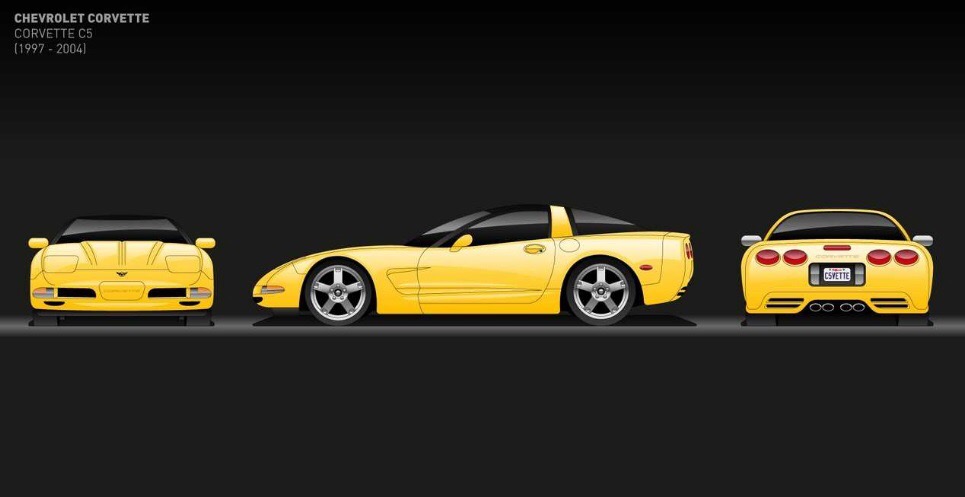
2003 was the Corvette’s 50th anniversary, so obviously Chevy had to do something to mark the important milestone. A limited-run model was launched with a red paint, bespoke badges, and a model-reserved two-tone cabin. In addition, the anniversary model was fitted as standard with Magnetic Selective Ride. Before being retired, the C5 earned a carbon fiber hood in its final year, 2004MY.
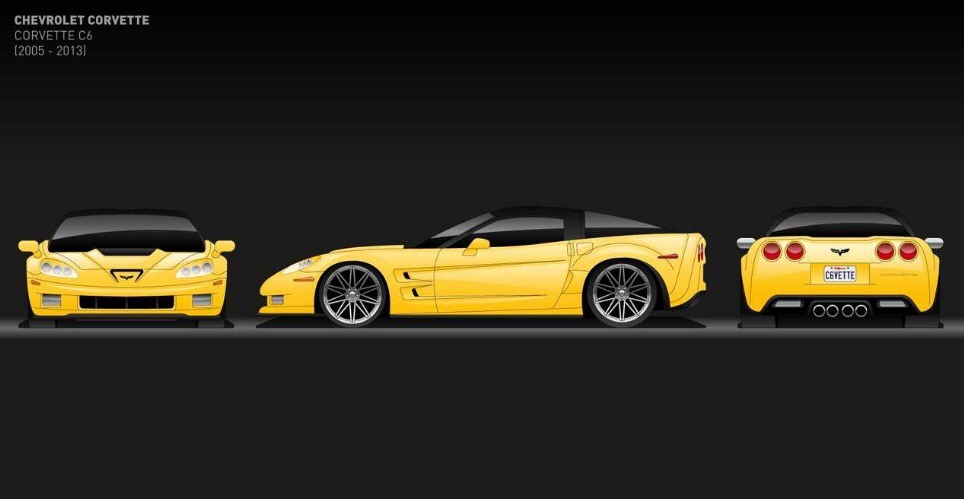
The 2006MY also saw the introduction of a paddle-shift, six-speed automatic gearbox, while a year later the Corvette got its first-ever signed limited edition in the form of the Ron Fellows Championship Edition. The base engine of the 2008MY was a then-new 6.2-liter V8 packing 430 hp. For 2009, the 200-mph supercharged ZR1 arrived.
Chevrolet marked the return of the Grand Sport for the 2010MY when it also implemented side airbags as standard equipment across the range. A Z06 Carbon Limited Edition arrived the following model year, and a Centennial Edition with an assortment of cosmetic tweaks inside and out was earmarked for 2012MY to signal Chevy’s 100th anniversary. During its final year (2013MY), the C6 received a 60th Anniversary package and a 427 convertible model.
Continue your automotive history lesson here:
10-Generation Civic Centerfold Is An Awesome Honda History Lesson 11 Generations Of Corolla Show Evolution Of A Bestseller
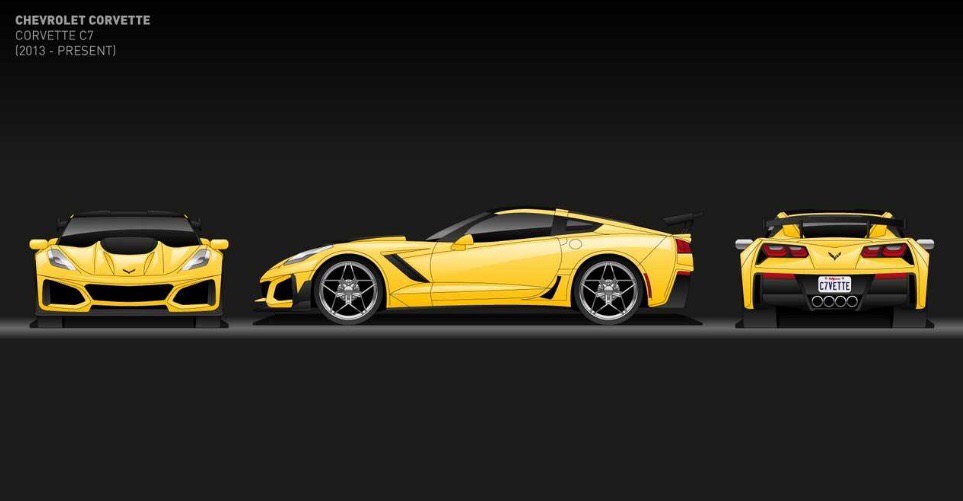
As some of you will recall, the beginning of the year was quite strange in terms of Corvette diversity in the sense that Chevy dealers had three different model years on sale at the same time: 2017MY, 2018MY, and 2019MY.
The arrival of the C8 is unlikely to spell the end of the C7 as reports are indicating the company with the bowtie emblem will sell the mid-engined Corvette alongside the traditional model for at least a couple of years.
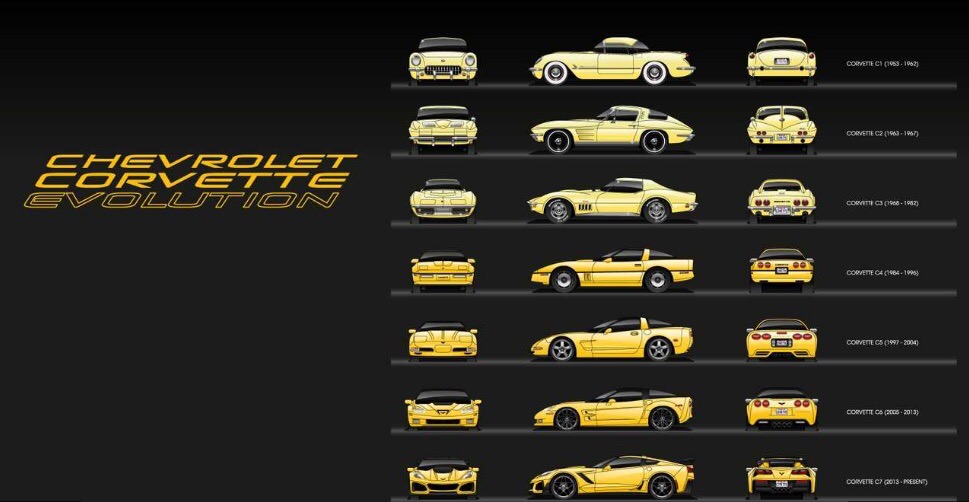
Chevy Corvette evolution
We’ve seen everything there is to see in the Corvette C7’s vast range, so all eyes are now on the imminent C8. If recent reports are any indication, the mid-engined supercar will finally receive its world debut in January 2019 at the North American International Auto Show in Detroit. However, production won’t allegedly start until September next year, which would make the C8 a 2020MY.
A recent GM patent indicates a manual gearbox will be offered, and a trademark hints at the use of the “Zora” moniker. Pre-production assembly has reportedly started already and we know for a fact thanks to spy shots that a mid-engined C8.R race car is being developed.
